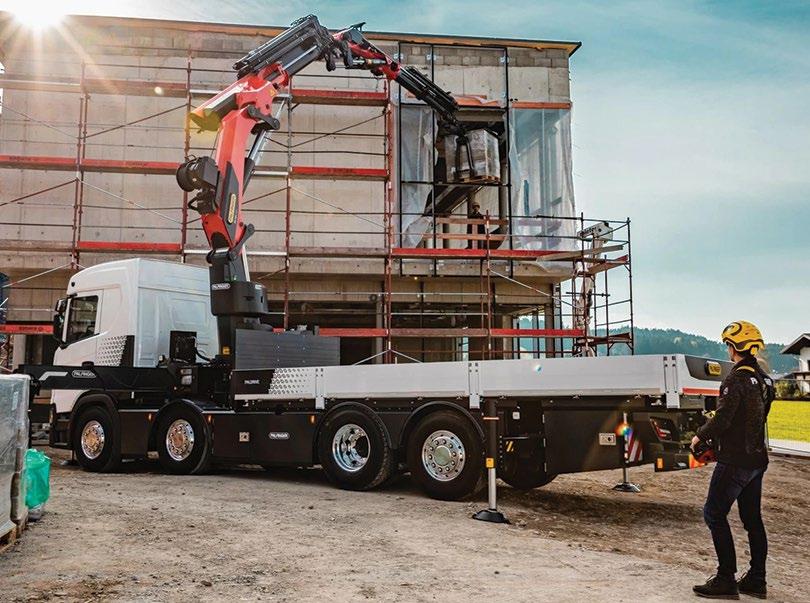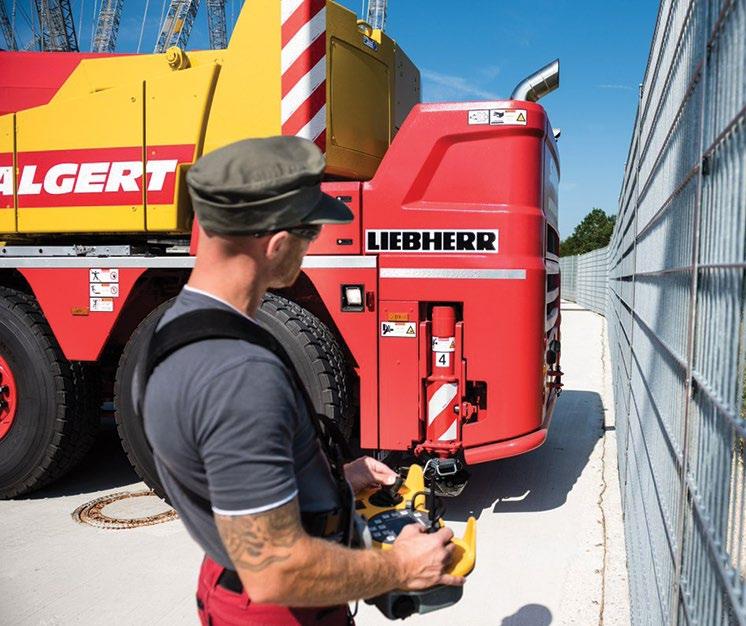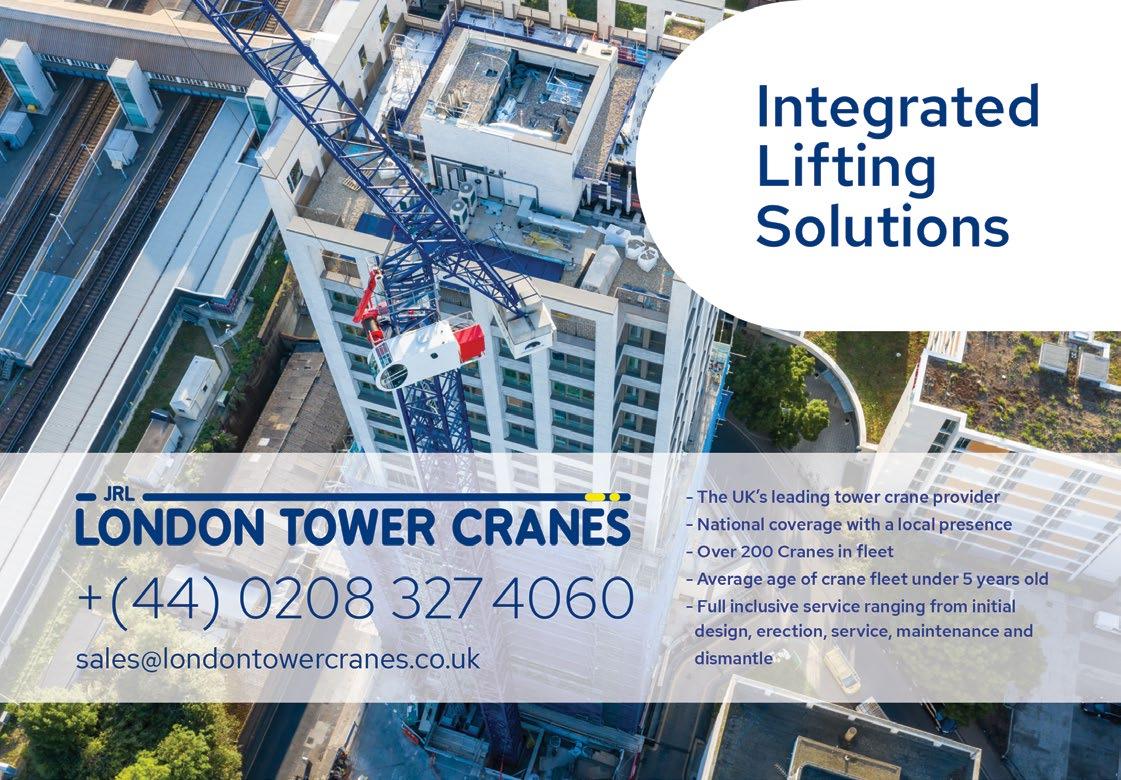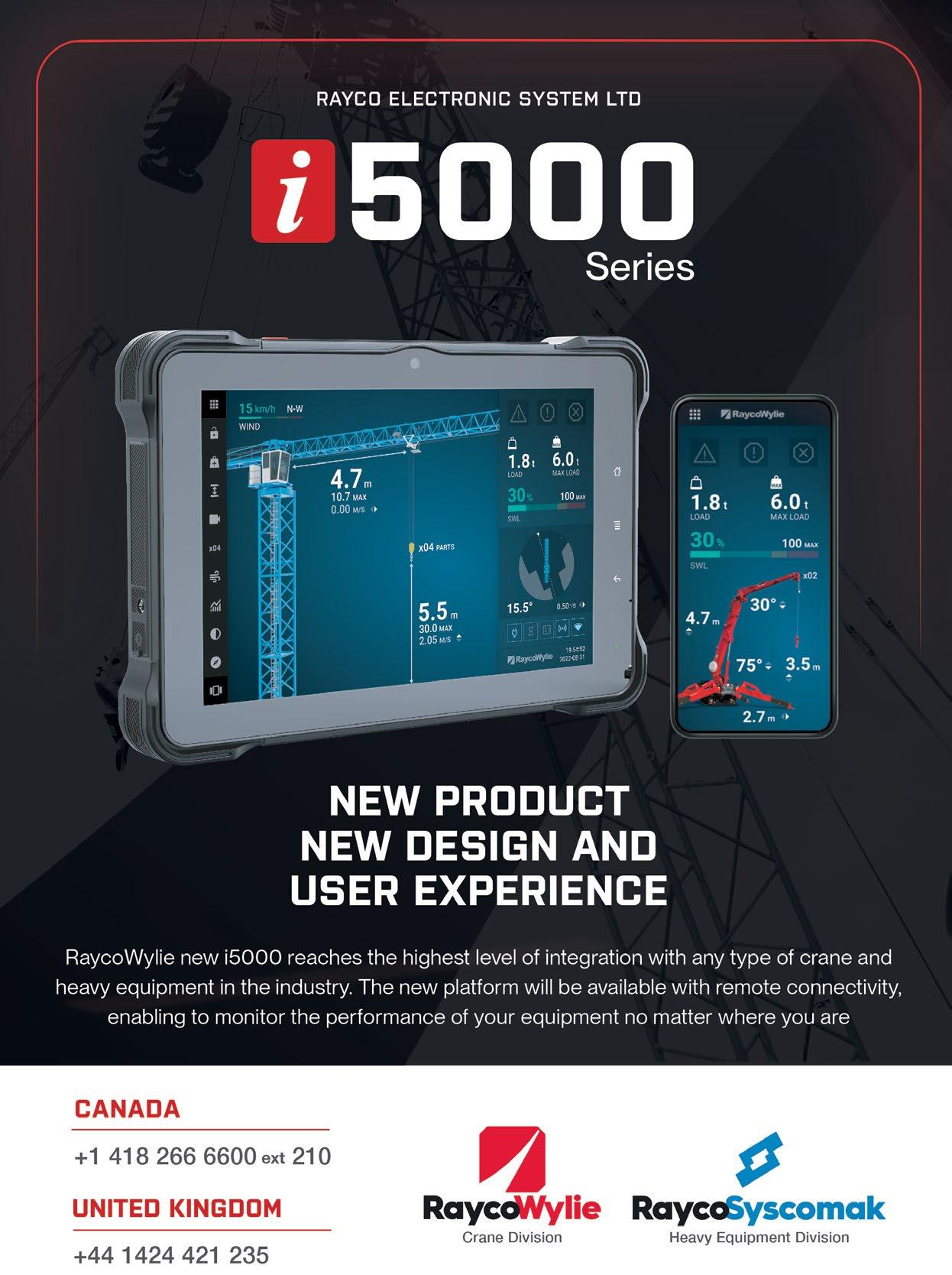
5 minute read
Benefits all round
It is fitting that this feature on radio remote controls coincides with features on loader cranes and spider lifts - two completely different types of equipment but both have been transformed by the adoption of radio remote controls. There is a noticeable trend however for more types of equipment to adopt the technology, which, apart from possible security issues as highlighted in the report on page 56, have enormous benefits.
The operation of machinery via remote controls allows operators to place themselves in the most beneficial position. With the advent of radio remote controls, operators are no longer confined to a stationary control point - the end of a trailing lead, or in a cab, a platform, or at the side of a machine - but are free to move around to gain the best possible view of the load or when manoeuvring the machine or a load in a tight spot.

More applications
The continual development in technology and manufacturing has resulted in a massive growth in applications away from the more traditional use on self-erecting tower cranes, loader cranes and aluminium truck cranes, although even in these applications there are improvements and new features being added all the time. One unusual application recently involved a remote controlled 3,500 tonne spreader beam with an automated sling handling system.
Loader crane manufacturer Hiab recently announced a modified version of its new iX.162 HiPro BSS-2, following an order for 400 from UK builders merchants Travis Perkins, with delivery scheduled over the next three years. The crane features the all-new CombiDrive 4 remote controls - the product of Hiab’s acquisition of Swedish electro-hydraulic valve bank and control system manufacturer Olsbergs at the end of last year. The new controller has confirmed view sensors which automatically detects operator position, providing improved safety for the operator, customers and members of the public. The crane has also been designed so that the engine can be stopped and restarted from the remote controller, reducing idling emissions and noise.

Ultimate remote
But perhaps the ultimate ‘remote control’ is the Skyline Cockpit - a tower crane teleoperation system that allows the crane to be operated live and remotely from a ground control system. The system located at ground level has many benefits including reducing the time and effort of climbing up to the cab and also allows operators with a fear of heights or mobility issues to take the job. The operator sits in a spacious air conditioned/ heated cabin on the ground with all the usual office comforts.
The system uses a peripheral wide-screen display that replicates the panoramic view from the cab, and it is even possible to operate the crane in the dark using a system based on advanced technological developments, Artificial Intelligence and Augmented Reality. The operator can precisely identify where the crane hook is positioned having visual readouts on the screens covering the height, load weight, wind speed, direction and work speed. The system has been marketed by UK tower crane specialist Radius Group which also claims that the Skyline Cockpit can detect any tower crane problems and immediately address them through preventative maintenance.


‘Remote only’
There has also been a move towards ‘remote only’ controls on many types of equipment - even boosting the usefulness of products such as the latest generation of tracked carriers. Spider lift manufacturers are increasingly dispensing with traditional fixed controls in the platform but rely on the radio remote controller which clips into a docking system when the operator is controlling the machine from the platform. This allows them to use the controller to manoeuvre the lift from the basket in the traditional way or quickly remove it to use it remotely when moving the machine, positioning in a tight spot or loading.
This move towards ‘remote only’ has also gained pace with Italian pick & carry crane manufacturers including Manitex Valla which has announced that it will unveil two more all-new pedestrian controlled all-electric pick & carry models - a 16 and an 18 tonne - although it still offers versions with cabs for those who prefer them. Valla had previously announced two smaller radio controlled cranes the 4.6 tonne V46 R and the 13 tonne V130RX. All of the new models will be launched at the upcoming CIS exhibition next month.


Product development
As already mentioned remote control manufacturers are constantly developing and improving their products. Most recently Cavotec announced the development of a new lightweight control unit for operators working with mobile and tower cranes over extended periods. The company says its MC3100 is lighter and more compact than many other of its current systems and broadens the scope of RRC applications as it includes all the safety features of its other units designed for the oil, gas and mining sectors. One of its main features is the option for users to easily adjust the height and angle of the controller from their belt, essential when the unit is in constant daily use.


Sustainable consumption
The downside of the boom in the use of radio remotes is the growing amount of electronic or ‘E’ waste. Last November members of the European parliament called for new measures to promote a culture of repair and reuse, along with support for repair and rebuild as well as second hand businesses, by making it easier and cheaper for consumers to have products repaired. Perhaps this will also allow users to have controls repaired and upgraded - with security patches for example - extending the lifespan and reducing electronic waste. ■










